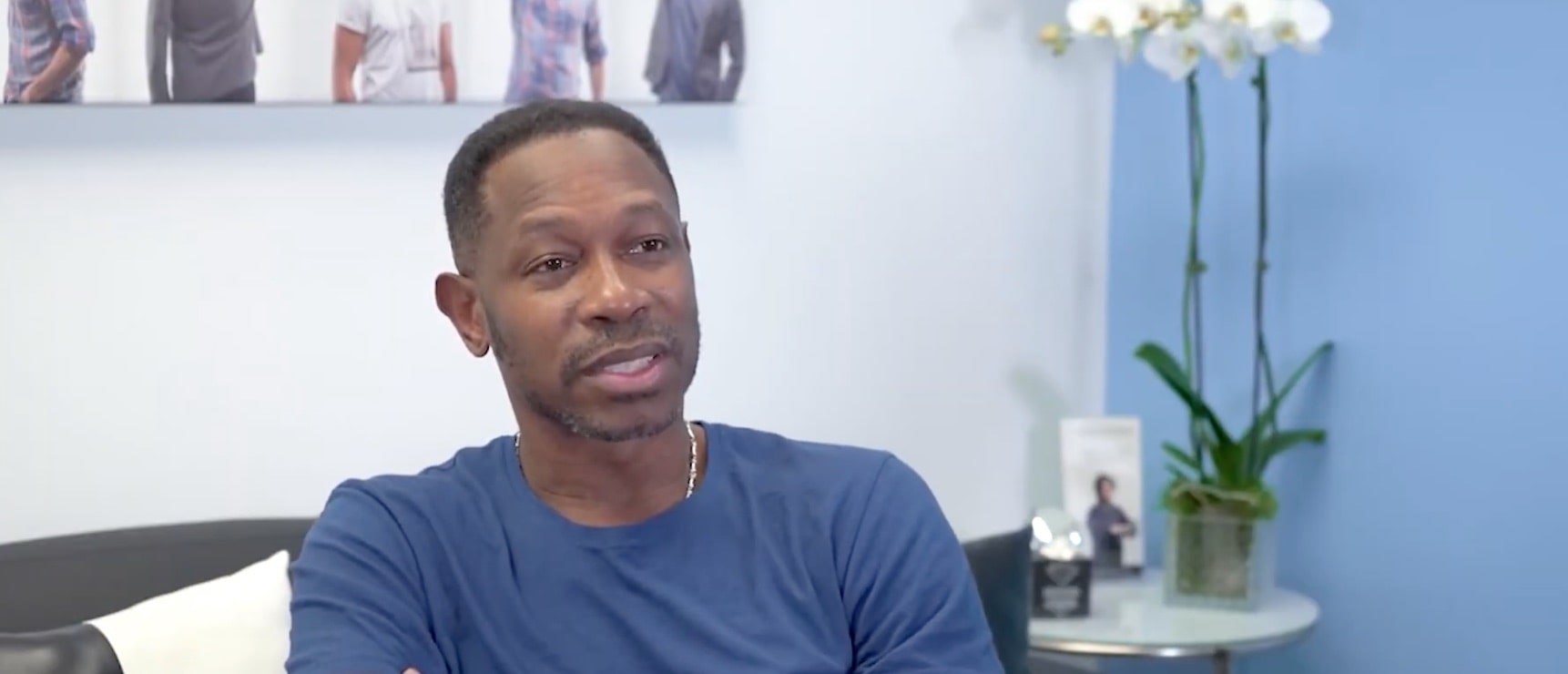
The idea of having a hair transplant is not limited by race or job status. Men and women of all ages desire a full and healthy head of hair that is visible to others. A full head of hair gives people self-confidence and helps improve their self-esteem when appearing in front of others. This is especially true of people who are constantly in the public eye and this includes Kenny Lofton, a former major league baseball player. Lofton played for multiple teams in his 17-year MLB career and he has been in the public eye since his retirement. He has worked as a TV commentator and is also the head of his own TV and film production company. Let’s take a look at the hair transplant journey that led Kenny Lofton to Los Angeles and Dr. Parsa Mohebi.
Because Kenny Lofton is often in front of the public, the appearance of his hair is very important to him personally and professionally. Lofton described the moment he first started to notice his receding hairline as a moment where he realized he might have to be bald for the rest of his life. Rather than simply “give up” on his hairline, Lofton decided to do proper research and find the right hair restoration doctor to give him the hairline he desired. His research brought him to Dr. Parsa Mohebi, a leading hair transplant surgeon in Los Angeles, Beverly Hills and San Francisco. Take a look at the video below as Lofton describes the FUE hair transplant experience in his own words:
FUE hair transplant is a shorter way to say Follicular Unit Extraction hair transplant. This is a hair transplant process that involves the hair transplant surgeon individually harvesting hair grafts from the donor area of the scalp of the patient. In addition to using hair taken from the donor area of the scalp, hair restoration surgeons can use hair from other parts of the body, such as body hair or the beard, if the patient does not have enough donor hair on the scalp to achieve the desired hair transplant goals. This hair restoration method is especially popular because the individual removal of the hair grafts ensures the patient does not have a linear scalp scar after the procedure.
FUE can be performed using both manual and motorized devices and the decision about how to harvest the hair grafts is determined by the individual needs of the patient. In addition, the number of hair grafts used during the surgery depends on the results desired by the patient. The number of hair grafts that are transplanted also depends on the available/viable number of hair grafts that are located in the donor area and/or on the body of the patient.
The hair grafts are individually removed from the body by a technician working under the supervision of the surgeon. Once the individual hair follicles are removed from the scalp or other areas of the body, they are implanted in tiny holes or premade incisions that are created by the doctor.
Patients can expect some swelling after the FUE hair transplant surgery but this will resolve on its own. In addition, there will be some pain and soreness at the site of the hair transplant but patients can take ibuprofen to relieve the pain as well as anti-inflammatories to relieve swelling and antibiotics to prevent any kind of infections from occurring.
The doctor will show the patient how to properly wash their hair following the FUE procedure. The patient will be able to return to work anywhere between three to seven days after the surgery. Patients should consult with their surgeon for a more accurate estimation of the time that will be needed off work.
As part of the recovery process, the hair that is transplanted will fall out around two to three weeks after the surgery. Patients should not worry when the transplanted hair falls out as this is a normal part of the hair transplant process. The hair will begin to grow back after eight to twelve weeks.
Some of the common risks involved with undergoing a hair transplant include:
As shown in the video above, the results of FUE hair transplant on Kenny Lofton’s hairline are already visible to the average eye. The finals results can take anywhere from 12-18 months to appear on the scalp so the Kenny Lofton hair transplant results are not fully visible yet to either Kenny or the general public. It should be noted that the transplanted hair is permanent and will not be lost by the patient in the future. The hair that is located around the transplanted hair can still be subject to the balding process so patients, such as Kenny Lofton, might consider undergoing another hair transplant in the future to address the additional balding areas on the scalp that will be ideal areas for an additional hair restoration procedure.